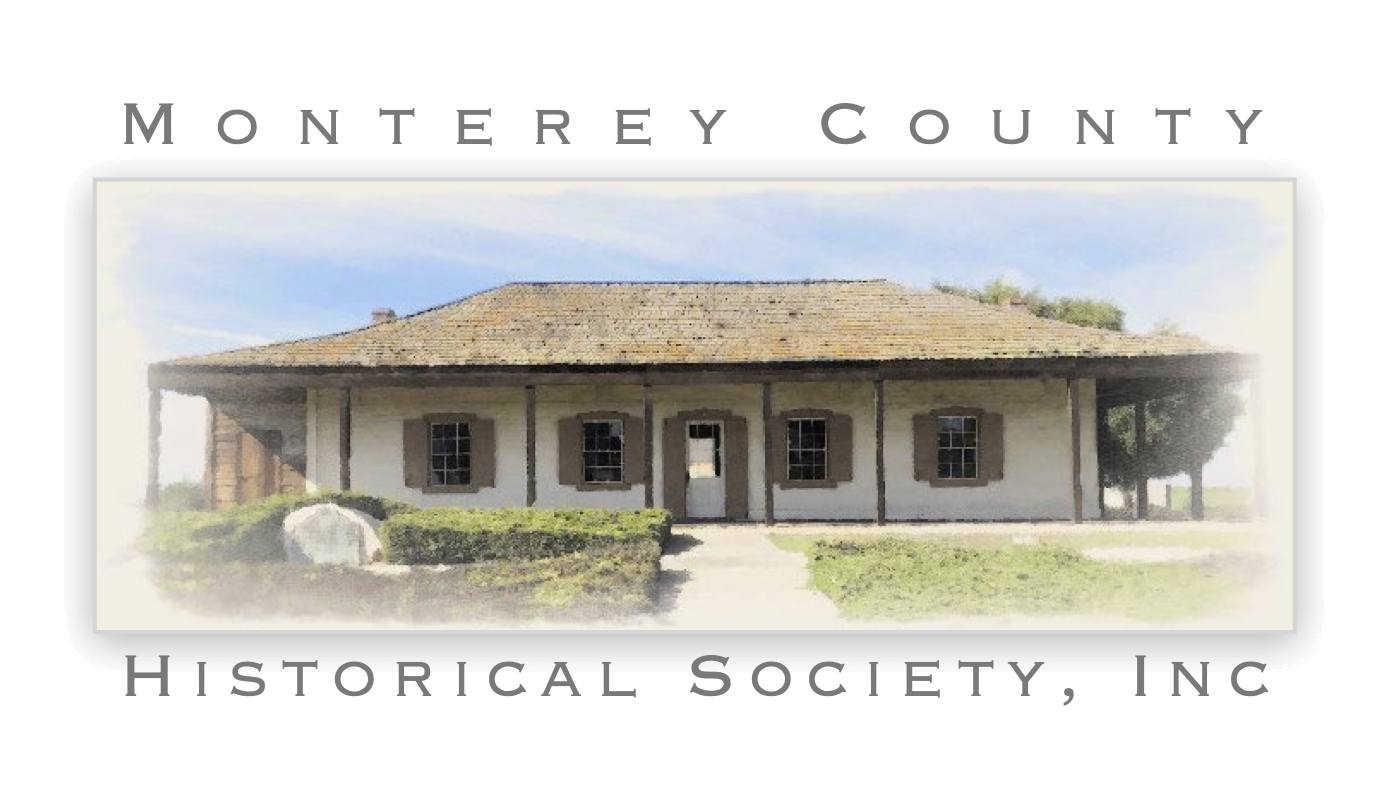by Gary S. Breschini, Ph.D.
The account of Vizcaíno’s coastal expedition is related in Coastal Navigation and Exploration of the Monterey Bay Area. This account details his exploration only of the Monterey area.
Sebastian Vizcaíno, leading a fleet consisting of the ships San Diego and Santo Tomás, and the frigate Tres Reyes, sailed past Carmel Bay and on December 16, 1602 rounded Punta de los Pinos (Point Pinos) and entered the harbor. They named the harbor after the viceroy of Mexico, Don Gaspár de Zúñiga y Acevedo, Count of Monte Rey, who had dispatched the expedition. They were the first known European explorers to reach Monterey.
They went ashore the following day, and pitched the church tent under the shade of an oak whose branches touched the tidewater, 20 paces from springs of good water in a ravine. (This ravine was located about where the tunnel leading from Monterey to Cannery Row emerges.) Most of the sailers were suffering from scurvy. Many were seriously ill, and 16 had already died! In the shadow of this historic tree, the first recorded mass north of San Diego was celebrated by Father Andrés de la Asunción.
The morning of December 17 was foggy, but the fog cleared as mass ended. After mass it was decided to send one of the vessels back to carry the sick and to report the expedition’s progress. Later that day the party set up camp on the shore, and remained in the area until January 3, 1603. The party worked on the ships, and on December 29, the San Tomás, carrying the sick, as well as news of the expedition, was dispatched for Acapulco. The voyage was one of great suffering; 25 men died on the way or soon after arrival. Only nine survived.
After the San Tomás departed, attention was turned to readying the remaining two vessels for the voyage north. The cold weather hampered their efforts. It was reported that on Christmas Day the mountains near the port were covered with snow, and New Year’s morning found the water holes frozen to the depth of a palm. By Friday, January 3, 1603, most of the chores were completed, and Vizcaíno, Father Andrés, and ten arquebusiers were able to explore inland to the southeast. About three leagues (a league averages perhaps 2.6 to 3.0 miles) away they discovered another port, with a copious river descending from snow-covered mountains. These are Carmel Bay and the Carmel River. They spotted elk, but were unable to kill any.
They encountered no people, but saw a village about a league away. When they investigated they found it deserted, and speculated the inhabitants had taken refuge in the interior to escape the cold. It is generally thought this was the village of Tucutnut, about a league from where Carmel Mission was subsequently located. This is the only village mentioned. The Monterey, New Monterey, and Pacific Grove areas apparently were uninhabited in January of 1603. Vizcaíno, however, reported that the land was thickly populated with numberless Indians, and that a great many came several times to their camp at Monterey. He comments that they indicated by signs that there were many settlements inland.
Little useful information was left by the explorers. They described the Indians as gentle and peaceable, docile, generous, and friendly, but not very adept at making themselves understood. (This latter comment probably applies more to the Spanish, as the Indians were undoubtedly adept at some form of sign language.) Their common foods are described as shell or other fish, acorns, and a nut larger than a chestnut (buckeye). Also described are seeds in abundance and variety, the flesh of game such as deer, bear, etc. For clothing they used the skins of sea lions and elk, they made fishing lines and nets, and used the bow-and-arrow. The party returned from the Carmel area at nightfall without having seen a single person. The main body had traveled some three leagues from camp, and the scouts four leagues. They sailed at midnight that night, never to return.
Culleton summarizes the effort as follows:
Vizcaíno had been sent to find a good port. He located but two worthy of any name and he pictured one of them as perfect. To attract the Church he peopled Monterey with numberless ideal Indians though he saw but one deserted rancheria. To entice colonists he spoke of much fertile land while he stood on sand overlooked by mountains. While numb with cold he wrote that the climate was like Seville’s. . . So untrue was this picture that Portolá and Crespi [in 1769] failed to recognize the place.
Copyright 1996 by G.S. Breschini
Sources:
- Bancroft, H.H., History of California, Vol. 1: 1542-1800 (Wallace Hebberd, Santa Barbara, CA, 1963; original 1886).
- Culleton, James, Indians and Pioneers of Old Monterey (Academy of California Church History, Fresno, CA, 1950).


